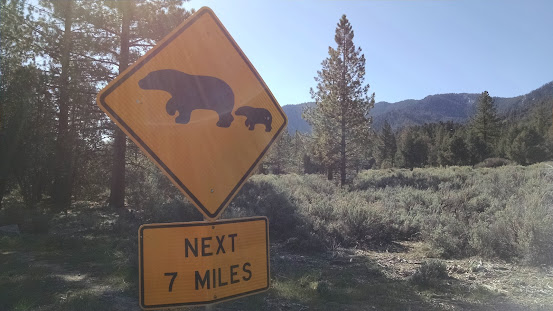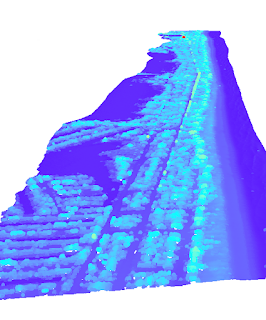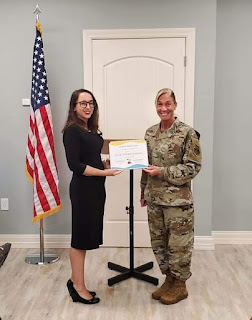Creating Corridors: Multi-Path Suitability Analysis
Background
Wildlife corridors are a stretch of land where animals migrate from one location to another. They can be as small as a culvert or as wide as entire continents. As humans encroach on habitats, creating and maintaining wildlife corridors are vital to the preservation of animal species. In this hypothetical scenario, we have been asked to propose a wildlife corridor for black bears living in the Coronado National Forest.
Coronado National Forest encompasses a large swath of southern Arizona and New Mexico, consisting of eight "wilderness areas". Animals wishing to travel from one wilderness area to another will encounter human development. We can think of animal movement in terms of cost. Like humans, the bears will want to use as few resources as possible and minimize risk in order to travel.
Objectives
For this project, we need to create a corridor. The corridor is the overlapping area between two cost-distance layers. Instead of picking only one acceptable route, we can consider a possible range. This range represents the least-cost option for travel for our black bears.
We will use the following parameters:
- Rank landcover classes suitability from 1-10 and weigh at 60%
- Rank elevation suitability from 1-10 and weigh at 20%
- Rank road distance suitability from 1-10 and weigh at 20%
Creating a Plan
First, we will need to prepare each objective on the same scale.
Note: Slope should be disregarded here as it is not a required criteria
After each parameter is scaled, they are combined into a weighted scale. Roads and elevation are weighed at 20% each and vegetation is given a weight of 60%.
Cost distance is calculated for each wilderness area using the weighted raster. The two output distances are overlayed to create a corridor.
Preparing the Layers
The study area is projected to UTM 12N with a cell size of 30 meters. The extent is set to the study area and all layers are masked to this extent. All layers will be given a 1 through 10 rank, with one being the least desirable and 10 the most desirable. It is vital that all layers are given the same scale in order to create an accurate comparison.
Black bears prefer mid-elevation levels as these contain the vegetation and food resources they need. These levels will be given the highest value while flat terrain is given the lowest.
Classify elevation into desired and undesired classes.
The provided road polyline is converted into a single-value raster, which is then reclassified for suitability. Even though bears could travel on roads, they would prefer to keep their distance due to the noise and danger. Distance within 100 meters of a road is given a value of 1, distances 100-500 meters are given a midrange value of 5, and anything further away is scored as a 10.
Create buffers around roads.
The last piece of prep work is to sort landcover classes into suitability levels. Black bears prefer forested areas where they can feed on acorns, berries, insects, and cactus fruit. These areas are given the highest value while human development and other barren areas are given a 1. Areas of water are excluded (as bears haven't invented houseboats yet).

Sort landcover classes into different desirability levels.
Choices, Choices, Choices
Our results show us the entire range of possibilities of where bears could travel. The darker the green, the fewer the costs/risks there are. We will need to narrow our results. It doesn't make sense for a black bear to travel from the southern wilderness area to the California border and then back to the northern wilderness area. That would be some road trip!
So how should we filter our results and present the most efficient route? This is definitely a subjective choice, and there are probably thousands of ways to classify each zone. My map is divided into 1/4 standard deviations as it will constrain the cost into very narrow margins.
Conveying Meaning from Analysis
Finally, the corridors are reduced to two likely pathways. A simple legend and coloring scheme quickly get across the information we need. And add a bear for flair~
Further Research
According to the Florida Fish and Wildlife Conservation Commission, black bears are an “umbrella species”, which is a species whose protection also protects a variety of other species. Additional animal species, especially endangered ones, should be considered in order to create the most protective corridor. These species’ suitability habitats can be weighted according to relative need.
Another factor in future studies could focus on human activity. This proposed corridor passes through the small town of Rio Rico and its inhabitants could impact animal behavior. Bears may choose to stay close to human infrastructure if there is food accessible. Movement may also be impacted by fencing, dogs, lights, and noise. Additionally, roads should have varied buffer distances/cost levels to reflect the level of danger they impose on wildlife. A dirt road imposes little risk compared to a major highway.
Additional Resources














Comments
Post a Comment